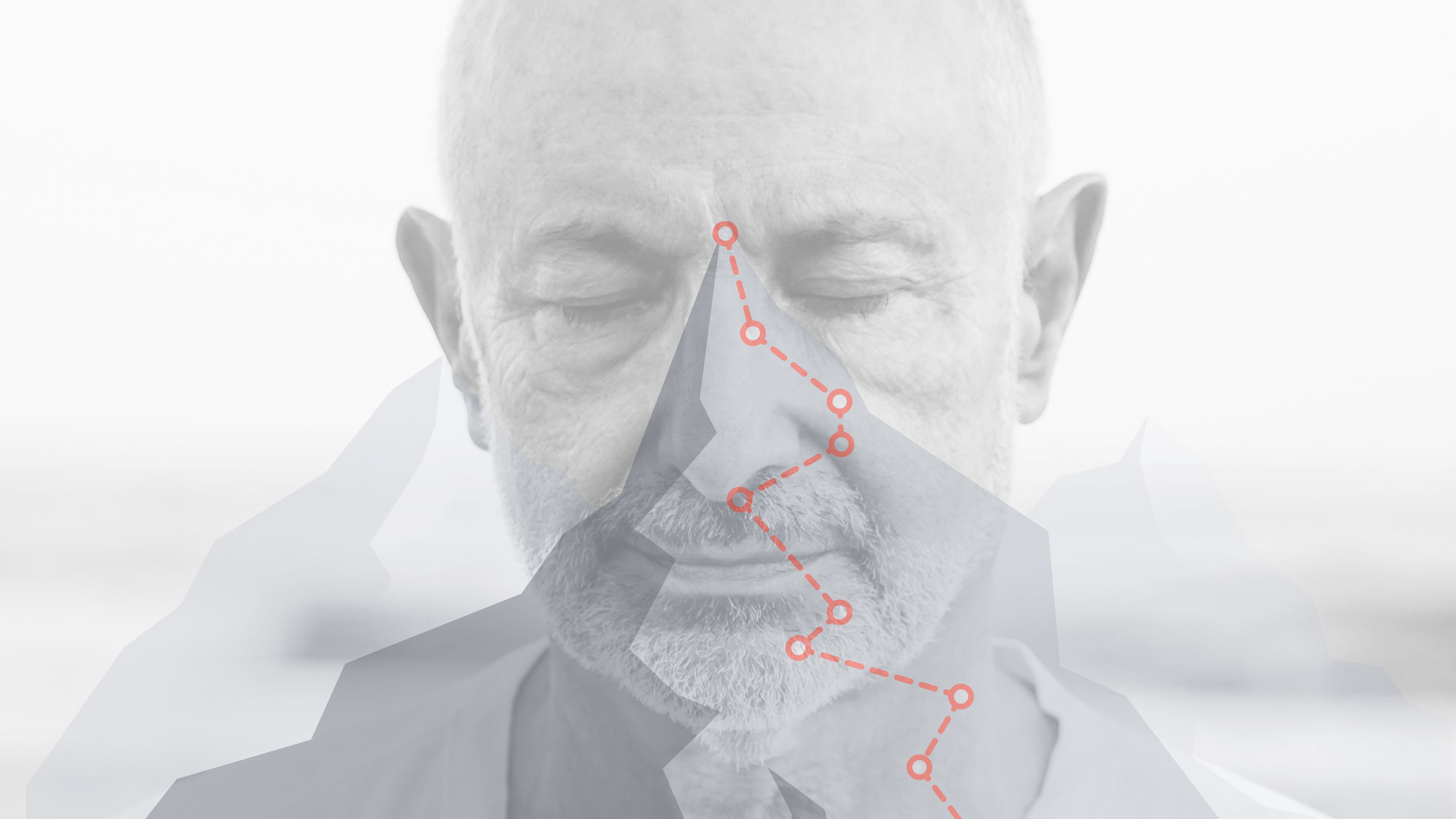“Knowing yourself is the beginning of all wisdom.” – Aristotle
In the complex and high-stakes environment of executive leadership, how deeply do you understand the individual steering the organization, making critical decisions, and shaping its legacy? That individual is you.
Leadership, at its most fundamental level, originates not from an external command, but from an internal understanding. This principle – Executive Self-Awareness – is the bedrock capacity for rigorous introspection, enabling leaders to clearly recognize their strengths, acknowledge their limitations (some of which are perceived by others as “blind spots”), define their core values, and understand their emotional landscape. It demands an honest and profound comprehension of your inner world – what drives you, what derails you, and the tangible impact of your presence and decisions on your teams and the broader organization. For executive leaders navigating constant change and significant responsibility, cultivating this level of self-awareness isn’t a developmental nicety; it’s a strategic imperative that directly influences organizational effectiveness, talent retention, and sustainable success.
Consider self-awareness the essential operating system for your leadership hardware. Without this robust internal programming, even leaders with immense talent and drive may find themselves misaligned with their teams, making suboptimal decisions due to unexamined biases, or struggling to understand the root cause of interpersonal friction. Research consistently demonstrates that highly self-aware leaders foster greater trust, build more cohesive and productive teams, and cultivate more positive and high-performing organizational cultures. However, achieving genuine self-awareness is an ongoing challenge, often complicated by the very confidence and decisiveness that define executive roles. This chapter outlines the critical components of executive self-awareness and provides actionable strategies to cultivate this vital leadership capability.
The Strategic Imperative: Why Self-Awareness Matters at the Top
The journey to and within executive leadership is defined by navigating complexity, managing uncertainty, and making decisions with far-reaching consequences. Executive self-awareness is critical because it profoundly impacts virtually every dimension of executive function and organizational performance.
- Elevated Decision-Making: A keen understanding of your cognitive biases, personal values, and emotional triggers allows for more objective, ethical, and strategically sound decisions. Recognizing a predisposition for optimism, for instance, can prompt a self-aware executive to actively solicit dissenting opinions and risk assessments before committing significant resources to a new venture.
- Refined Communication and Interpersonal Influence: Awareness of your communication style, its impact, and potential areas for misinterpretation enables you to tailor your approach for maximum clarity and influence across diverse stakeholder groups. An executive who understands their tendency towards directness might consciously employ more empathetic language when delivering difficult news or coaching team members.
- Authenticity and Enhanced Trust: Leaders who demonstrate genuine self-awareness, including a willingness to be vulnerable and transparent about their learning edge, build deeper trust and credibility. Executives who consistently act in alignment with their stated values cultivate a culture of trust and accountability that permeates the organization.
- Increased Resilience and Adaptability: Self-awareness provides insight into your responses to stress, pressure, and setbacks. By recognizing emotional patterns and triggers, executives can develop healthier coping mechanisms, maintain composure during crises, and lead with greater stability through turbulent times.
- Optimized Team Performance: Understanding your leadership strengths allows you to strategically deploy your talents and identify where to empower others or build complementary capabilities within your leadership team. Recognizing your blind spots fosters openness to feedback and the humility to surround yourself with individuals whose strengths offset your areas for growth. This is crucial for building high-performing, synergistic executive teams.
- Strategic Career Trajectory and Fulfillment: A deep understanding of your motivations, strengths, and values is essential for making career choices that ensure long-term engagement and impact. Executives who invest in self-awareness are better equipped to identify roles and opportunities that align with their purpose, leading to greater personal fulfillment and sustained professional contribution.
Ultimately, without a robust foundation of self-awareness, an executive leader’s potential remains constrained. While technical expertise and strategic acumen are essential, the ability to inspire, influence, and effectively lead people through complex challenges is fundamentally rooted in understanding and mastering oneself. For leaders at the helm, cultivating this internal clarity is not just about personal growth; it is a direct investment in the organization’s capacity to thrive.
A Frameworks for Executive Insight
While the concept of self-awareness is intuitively understood, established psychological models provide valuable frameworks for deeper comprehension and development, particularly relevant in the executive context:
Daniel Goleman’s Emotional Intelligence (EQ): Goleman asserts that Emotional Intelligence is a critical differentiator for leadership success, with self-awareness as its foundational pillar. His framework identifies three key self-awareness competencies:
- Emotional Self-Awareness: Recognizing your emotions and their impact on your judgment, behavior, and effectiveness in high-pressure situations.
- Accurate Self-Assessment: Possessing a realistic view of your strengths and limitations, acknowledging both capabilities and vulnerabilities without ego or defensiveness.
- Self-Confidence: A strong, well-grounded belief in one’s capabilities, derived from an accurate understanding of self, enabling decisive action and calculated risk-taking.
Leaders with high emotional self-awareness are better equipped to navigate complex political landscapes, manage stress effectively, and understand the emotional undercurrents within their teams and across the organization.
The Johari Window: Developed by Joseph Luft and Harrington Ingham, this model elegantly illustrates the dynamics of self-awareness in relation to others. It divides personal awareness into four quadrants:
- Open Area (Arena): Aspects of yourself known to both you and others. Expanding this area through transparency and consistent behavior builds trust and clear communication.
- Blind Spot: Aspects unknown to you but apparent to others. Reducing this quadrant through proactive feedback seeking is crucial for mitigating unintended negative impact.
- Hidden Area (Façade): Aspects known to you but concealed from others. Strategic and authentic self-disclosure can build deeper connections and foster psychological safety within a team.
- Unknown Area: Aspects unknown to both yourself and others. New experiences, challenges, and deep reflection can uncover untapped potential and hidden motivations.
The Johari Window underscores that executive self-awareness is not solely an internal introspective process but is significantly enhanced through open communication, feedback, and purposeful interaction with others. Actively seeking feedback from trusted colleagues and mentors is a powerful mechanism for shrinking the “Blind Spot” and expanding the “Open Area,” leading to more effective leadership and relationships.
These frameworks provide a robust lens through which executives can understand the multifaceted nature of self-awareness and its critical role in personal and organizational effectiveness.
Case in Point: The Strategy Retreat Blind Spot
Consider the case of a newly appointed CEO, known for her sharp intellect and decisive nature. She quickly developed a compelling new strategic vision for the company and called a retreat with her executive leadership team to present and refine it. She arrived prepared with detailed analysis and a clear implementation roadmap.
During the retreat, the CEO presented her vision with passion and conviction, clearly articulating the market opportunity and the required shifts. However, as the session progressed, she noticed a surprising lack of engagement from several key members of her team. Questions were perfunctory, and discussion felt stilted. Frustrated, she pushed harder, emphasizing the urgency and the irrefutable logic of her plan. The more she pushed, the quieter some team members became.
Later, in a candid one-on-one with a trusted, long-tenured executive vice president, she received direct feedback: “Your vision is strong, and your analysis is flawless. But in that room, your certainty felt absolute, leaving very little space for others to genuinely contribute or challenge. It felt less like a collaborative refinement and more like a directive.”
This feedback was a revelation. The CEO prided herself on collaboration and valuing her team’s expertise. Yet, her intensity and deep conviction in her vision, while a strength in driving forward, had unintentionally created a dynamic where her team felt unable to offer meaningful input or express potential concerns. Her passion had, in this instance, become a blind spot, hindering the very buy-in and collective ownership the strategy needed to succeed.
Drawing on her understanding of leadership principles, the CEO recognized this as a critical moment of self-awareness. Her emotions – her excitement and belief in the strategy – had overridden her intention to co-create. Her underlying value was organizational success, but her behavior was inadvertently undermining the collaborative spirit required to achieve it.
At the next leadership meeting, the CEO opened by acknowledging the feedback she had received. She shared her realization about the unintended impact of her communication style and explicitly invited open dialogue and constructive challenge regarding the strategy. She then intentionally shifted her approach, asking open-ended questions, actively listening without interruption, and creating space for every voice to be heard.
The dynamic transformed. The team, feeling genuinely empowered, engaged in robust discussion, raised critical questions, and offered valuable insights that ultimately strengthened the strategy and fostered a shared sense of ownership. The CEO learned that her strength of conviction needed to be balanced with a conscious effort to cultivate an environment of psychological safety where challenging ideas was not only permitted but encouraged. Recognizing her blind spot and understanding the interplay of her strengths, emotions, and impact allowed her to adjust her leadership behavior, leading to a more engaged team and a more robust strategic outcome. This experience underscored that executive self-awareness is an ongoing process of receiving feedback, reflecting, and adapting one’s approach for greater effectiveness.
Cultivating Executive Self-Awareness: Actionable Strategies
Developing and deepening executive self-awareness is a continuous journey requiring discipline and a commitment to honest self-appraisal. The following strategies are essential practices for leaders at all levels:
- Implement Structured Reflection: Beyond daily to-do lists, dedicate specific time for structured reflection. This could involve journaling, using a voice recorder, or simply quiet contemplation. Focus on:
- Analyzing challenging interactions: What emotions were present (yours and others’)? What was your reaction? What impact did it have? What could have been done differently?
- Examining key decisions: What were the underlying assumptions? What biases might have been at play? How did your values influence the outcome?
- Identifying energy patterns: What activities or interactions energize or drain you, and why? How does this impact your effectiveness?
- Connecting actions to values: Were your behaviors aligned with your stated core values? Where were there discrepancies?
- Why it works: Structured reflection provides the necessary pause to move beyond reactive responses and gain deeper insights into your behavioral patterns, emotional triggers, and underlying motivations.
- Proactively Solicit 360-Degree Feedback: Do not wait for formal performance reviews. Actively seek candid, constructive feedback from a diverse group of trusted colleagues – peers, direct reports, mentors, and even board members if appropriate.
- Be specific in your requests: Instead of a general “How am I doing?”, ask “Can you give me specific feedback on my communication style in executive team meetings?” or “What is one thing I could do to be a more effective delegator?”
- Listen with an open mind: Your goal is to understand their perception, not to defend your intentions. Thank them sincerely for their honesty, even if the feedback is difficult to hear. Look for recurring themes across different feedback sources – these often highlight blind spots.
- Why it works: This is the most direct way to uncover blind spots. Others often perceive behaviors and impacts that we are unaware of, and actively seeking this external perspective is crucial for a complete self-view.
- Practice Mindfulness and Emotional Regulation: Develop the capacity to observe your emotions in real-time without immediate judgment or reaction. Simple mindfulness techniques, like focused breathing for a few minutes before a high-pressure meeting, can increase your awareness of your physiological and emotional state.
- Label your emotions: When you experience a strong feeling, pause and identify it specifically (e.g., “I feel frustrated by this roadblock,” “I sense anxiety about this negotiation”).
- Understand your triggers: Through observation, identify the situations or interactions that consistently evoke strong emotional responses.
- Why it works: Mindfulness enhances present-moment awareness, enabling you to intercept habitual reactive patterns and choose more intentional responses, particularly in emotionally charged executive situations.
- Define and Live Your Core Values: Clearly identify the fundamental principles that guide your decisions and behaviors.
- Reflect on moments of pride and frustration: What values were being honored or violated in those instances?
- Consider what you stand for: What principles are non-negotiable for you, professionally and personally?
- Integrate values into practice: Consciously align your actions and decisions with your identified values. Communicate these values to your team, making them a shared standard.
- Why it works: A clear understanding of your core values provides an internal compass, guiding ethical decision-making, fostering authenticity, and reducing internal conflict between intentions and actions.
- Conduct a Rigorous Strengths and Areas for Growth Analysis: Beyond informal self-assessment, utilize feedback and reflection to gain a clear-eyed view of your capabilities and limitations.
- Analyze past successes: What specific strengths were instrumental in achieving positive outcomes? How can you leverage these more intentionally?
- Examine past failures or challenges: What weaknesses or blind spots contributed to less favorable results? Which of these are critical to address for future effectiveness?
- Consider formal assessments (with professional guidance): Tools like the Leadership Practices Inventory (LPI) or potentially the Hogan Assessments (common in executive development) can provide structured data points on leadership behaviors and potential derailers.
- Focus on leveraging strengths: While addressing critical weaknesses is necessary, truly effective executives often focus on amplifying their natural talents and building teams that complement their areas for growth.
- Why it works: Knowing your strengths enables strategic application and role selection. Understanding areas for growth allows for targeted development, delegation, and building a well-rounded executive team.
- Pay Attention to Physiological Signals: Your body often provides early warnings or indicators of your emotional state and stress levels. Notice physical reactions like tension, fatigue, or heightened energy in different leadership contexts.
- Why it works: Recognizing these physical cues can provide valuable, often subconscious, information about your emotional responses and help you identify triggers before they fully manifest.
- Embrace New and Challenging Experiences: Step outside your comfort zone and take on assignments or roles that push your boundaries.
- Reflect critically on these experiences: What did you learn about your capabilities and limitations under pressure? What previously unknown strengths or reactions emerged?
- Why it works: Novel and challenging situations reveal aspects of yourself that may not surface in routine activities, expanding your self-understanding and uncovering untapped potential.
A Toolkit for Deeper Executive Insight: Relevant Assessments
Beyond self-reflection and feedback, several structured assessment tools can offer valuable data points and frameworks for enhancing executive self-awareness. These instruments should be viewed as catalysts for insight and discussion, not definitive labels, and are often most effectively utilized with the guidance of an experienced coach or facilitator.
- Myers-Briggs Type Indicator (MBTI): The MBTI can provide a useful framework for understanding natural preferences in areas like energy focus, information gathering, decision-making, and approaching the external world. For executives, understanding type preferences can illuminate communication styles, collaboration tendencies, and potential areas for friction based on differing approaches. It can offer insights into how you process information and make decisions, which is valuable in diverse executive teams.
- The Enneagram: This system explores nine core personality types driven by distinct motivations and fears. For executives, the Enneagram can be a powerful tool for uncovering deeply ingrained patterns of behavior, understanding core drivers (both healthy and unhealthy), and identifying potential “shadow” aspects that might be creating blind spots or undermining effectiveness under stress. It offers specific growth paths tailored to each type.
- Gallup CliftonStrengths: This assessment identifies your dominant natural talents across 34 themes. For executives, understanding your signature themes provides a language for articulating your unique contributions and intentionally leveraging your innate abilities. It focuses on building from strengths rather than solely fixing weaknesses, which is a key aspect of executive development and team building.
- Leadership Practices Inventory (LPI): A 360-degree assessment based on Kouzes and Posner’s Five Practices of Exemplary Leadership, the LPI provides feedback from peers, direct reports, and others on the frequency of specific leadership behaviors. For executives, the LPI is invaluable for comparing self-perception with the perceptions of those they lead and work alongside, powerfully highlighting blind spots and identifying specific behavioral areas for development aligned with effective leadership models.
Leveraging these or similar assessments, when combined with rigorous self-reflection and open feedback, can significantly accelerate an executive’s journey toward deeper self-awareness, providing a richer understanding of their impact and areas for focused development.
Critical Reflection for the Executive Leader
Pause and consider these questions, not just as an intellectual exercise, but as an honest appraisal of your leadership:
- When have you received feedback that, while perhaps initially challenging, ultimately revealed a significant blind spot in your leadership or impact? How did you process it, and what actions did you take?
- Recall a situation where you were most proud of how you led. What core values were you explicitly or implicitly demonstrating? What strengths were most evident?
- In what high-pressure or challenging situations do you find your emotions (e.g., impatience, frustration, anxiety) most likely to impact your behavior or decision-making? What are the typical triggers, and what is the impact?
- If you were to articulate your top 3-5 leadership strengths, supported by specific examples from your executive experience, what would they be? How are you intentionally leveraging these strengths?
- Conversely, what is one area of leadership effectiveness where you know you need to grow or be more mindful, and what is one concrete step you will commit to taking this quarter to address it?
Executive Development Exercise: The Leadership Impact SWOT
Adapt the strategic SWOT analysis framework (Strengths, Weaknesses, Opportunities, Threats) to gain a focused view of your leadership self-awareness and impact.
Instructions: On a single page or document, create four quadrants labeled:
- Strengths (Internal – Positive): Your inherent talents, honed skills, positive leadership attributes, and consistent high-impact behaviors. What do trusted colleagues consistently commend you for?
- Weaknesses / Areas for Growth (Internal – Negative): Your limitations, recurring challenges, negative habits, or blind spots that hinder your effectiveness. What constructive feedback have you received (or avoided)? What tasks or situations do you consistently struggle with or mishandle?
- Opportunities (External – Positive): How can you leverage your strengths more strategically in your current role or future aspirations (e.g., mentoring opportunities, cross-functional projects, board roles)? What resources or relationships can help you address your areas for growth or gain insights into blind spots (e.g., executive coaching, leadership development programs, peer networks)?
- Threats (External / Internal – Negative): What external pressures or organizational dynamics could exacerbate your weaknesses or blind spots? What internal tendencies (e.g., overconfidence, resistance to feedback, fear of failure) could undermine your strengths or derail your leadership effectiveness?
Guidance:
- Be Ruthlessly Honest: The value of this exercise lies in your candor.
- Consider Different Contexts: Reflect on your performance and impact in various executive settings (board meetings, team interactions, strategic planning, crisis management).
- Focus on Impact: Frame your points in terms of how they affect your leadership effectiveness and the organization’s outcomes.
Review and Action Planning: After completing the SWOT:
- How can you strategically deploy your Strengths to capitalize on Opportunities and mitigate Threats?
- How can you actively address your Weaknesses to reduce their impact and potentially transform them into Opportunities for development?
- What specific, measurable actions will you take based on this analysis to enhance your leadership self-awareness and address critical areas for growth within the next 90 days?
Reflection Prompt (following the activity):
“What was the most impactful or surprising insight from my Leadership Impact SWOT? How will this refined self-awareness directly influence my strategic priorities and leadership behaviors in the immediate future?”
Conclusion: The Ongoing Executive Edge
Executive self-awareness – the deep, unflinching understanding of your strengths, blind spots, values, and emotional architecture – is not merely a “soft skill”; it is the foundational competency that underpins authentic, effective, and sustainable executive leadership. In an era of unprecedented complexity and rapid change, the capacity to look inward with clarity and courage is a significant competitive advantage. It empowers you to make more insightful decisions, build stronger and more resilient teams, lead with integrity, and continuously adapt and evolve. Embracing the journey of self-awareness is the most critical investment an executive leader can make – an investment in the capacity to lead from a place of strength, authenticity, and positive impact. It is an ongoing discipline, but one that yields immeasurable returns for the executive and the organization they serve.




